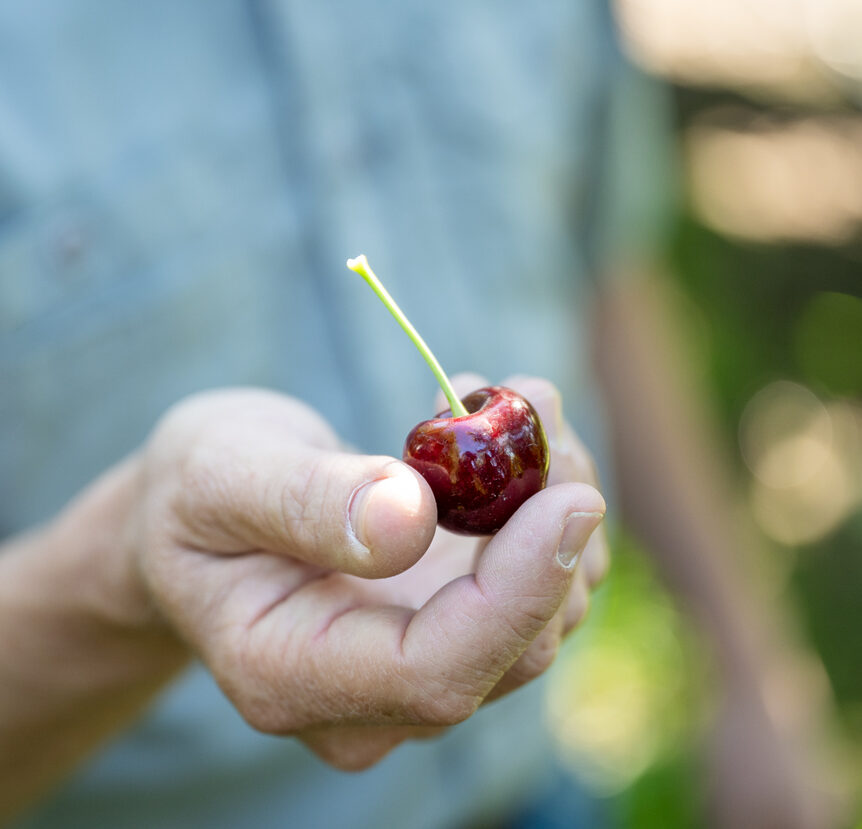Our goal as regenerative growers is to pack nutrients into our growing crops, so they can resist disease, increase yields, and provide healthful benefits to the people who eat them.
Generally we think that our opportunity to influence a crop’s nutrition starts in the springtime, and continues through the summer until harvest. But with perennial crops, it’s useful to reframe our mindset about this window of opportunity.
Grower Mike Omeg points out that, for cherries, the amount of time before harvest is equal to the amount of time after harvest: about three months. So we have as much time to influence the tree’s nutrition after the crop is actually harvested as we do before harvest. “If we don’t follow a post-harvest nutrient program,” says Omeg, “we’re cutting our window of opportunity to build that next season’s crop in half.”
The same principle applies for many summer-fruiting perennials: strawberries, blueberries, raspberries, apricots, peaches, plums, and so on.
The nutrition we apply post-harvest helps the tree recover from the enormous exertion of producing a crop of fruit. The nutrients also get packed into the developing buds which form after harvest, and will be immediately available the following spring to influence the quality of that year’s crop.
Furthermore, the post-harvest window of opportunity can be a much more practical time to apply nutrition, as there are many obstacles to applying nutrients early in the springtime, before blossoming:
- The surface area of leaves is very small, making it hard for the plant to absorb foliar nutrients.
- You run the risk of injuring delicate young plant tissue with over-applied nutrients.
- Field conditions can be wet and inaccessible for equipment.
- The quickly developing growth has such high nutrient demand that it can be impossible to apply enough nutrition quickly enough.
- There aren’t enough leaves to be able to perform sap analysis.
Your window of opportunity to influence the quality if your crop may be much wider than you think.
Subscribe to our blog.
You'll get each post to your inbox (~1x/week).
You may unsubscribe at any time. We value your personal information. Here's our Privacy Policy.
"*" indicates required fields



